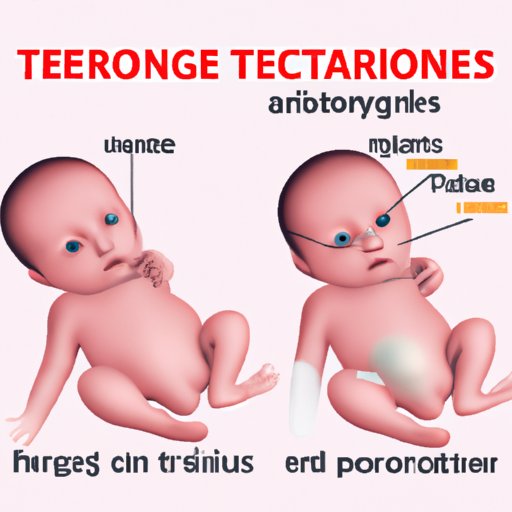Understanding Teratogenesis: The Causes, Effects, and Prevention of Congenital Anomalies
Teratogenesis refers to the process through which congenital anomalies occur in fetuses during pregnancy. Congenital anomalies are defined as physical or functional anomalies that are present at birth and affect a child’s overall health and quality of life. These anomalies can occur due to genetic mutations, but often they stem from environmental factors that impact fetal development. Teratogenesis is a complex process involving various contributing factors, but with proper education and preventative measures, it can be minimized.
The Science Behind Teratogenesis: A Comprehensive Guide
Teratogens are substances that can cause birth defects and congenital anomalies in developing fetuses. Different types of teratogens exist, including physical agents such as radiation, chemical agents such as certain medications, and infectious agents such as viruses. Teratogens can impact fetal development in several ways, including chromosomal abnormalities, disruption of organ development, and interference with the nervous system’s development. Genetic and environmental factors can play a role in the manifestation of teratogenic effects.
Teratogenesis and Pregnancy: How to Minimize Risks to Your Unborn Baby
Expecting mothers can reduce risks associated with teratogens by practicing proper self-care during pregnancy. Avoiding risky activities such as smoking, alcohol consumption, and drug use, and following a healthy diet can significantly reduce the chances of harm to the developing fetus. Regular prenatal care and communication with healthcare professionals can ensure that any potential issues can be identified early and addressed in a timely manner.
Exploring the Link Between Teratogens and Birth Defects in Children
Babies exposed to teratogens in utero can be born with a wide array of birth defects, ranging from mild to severe. Common birth defects caused by teratogens include heart abnormalities, cleft palate and lip, and neural tube defects like spina bifida. These defects can have long-lasting impacts on children and their families, including cognitive and physical impairments, developmental delays, and decreased quality of life. Detecting and treating these issues early can significantly improve outcomes.
Teratogenesis and Development: What Happens Before Birth?
Different stages of fetal development can be impacted by teratogens, and the effects can be dependent on the timing of exposure. During the embryonic period, when the fetus is most vulnerable, exposure can result in miscarriage, major malformations, or no apparent effects at all. Meanwhile, exposure during the fetal period may result in functional or behavioral abnormalities affecting a child’s developmental trajectory. Known risk factors for teratogenic effects include exposure to specific chemicals and toxins, certain infections, and poor maternal nutrition.
Preventing Teratogenesis: Tips for a Healthy and Safe Pregnancy
Expecting mothers can take steps to promote healthy fetal development and reduce the risks associated with teratogens. Proper nutrition, hydration, exercise, and stress management are all important for maintaining optimal fetal health. Avoiding known teratogens and being aware of potential environmental hazards can also ensure a safe and healthy pregnancy. Regular communication with healthcare professionals can help expecting mothers stay informed about relevant medical issues and prevent any potential complications.
Teratogenesis and Environmental Factors: Examining the Impact of Chemicals and Toxins
Environmental factors such as exposure to toxins and chemicals can lead to teratogenesis, exacerbating the already significant risks associated with pregnancy. These factors include exposure to harmful industrial byproducts, pesticides, and household chemicals. Advocacy for better regulations of toxic substances and greater awareness among the public can help mitigate these risks.
Conclusion and Future Outlook
Teratogenesis is a complex process, but increasing knowledge of its causes and effects can guide preventative measures and lead to better outcomes for mothers and children. By practicing proper self-care, increasing awareness, and advocating for better regulations, we can contribute to safer and more successful pregnancies, reducing the risk of congenital anomalies and improving the quality of life for families worldwide.
